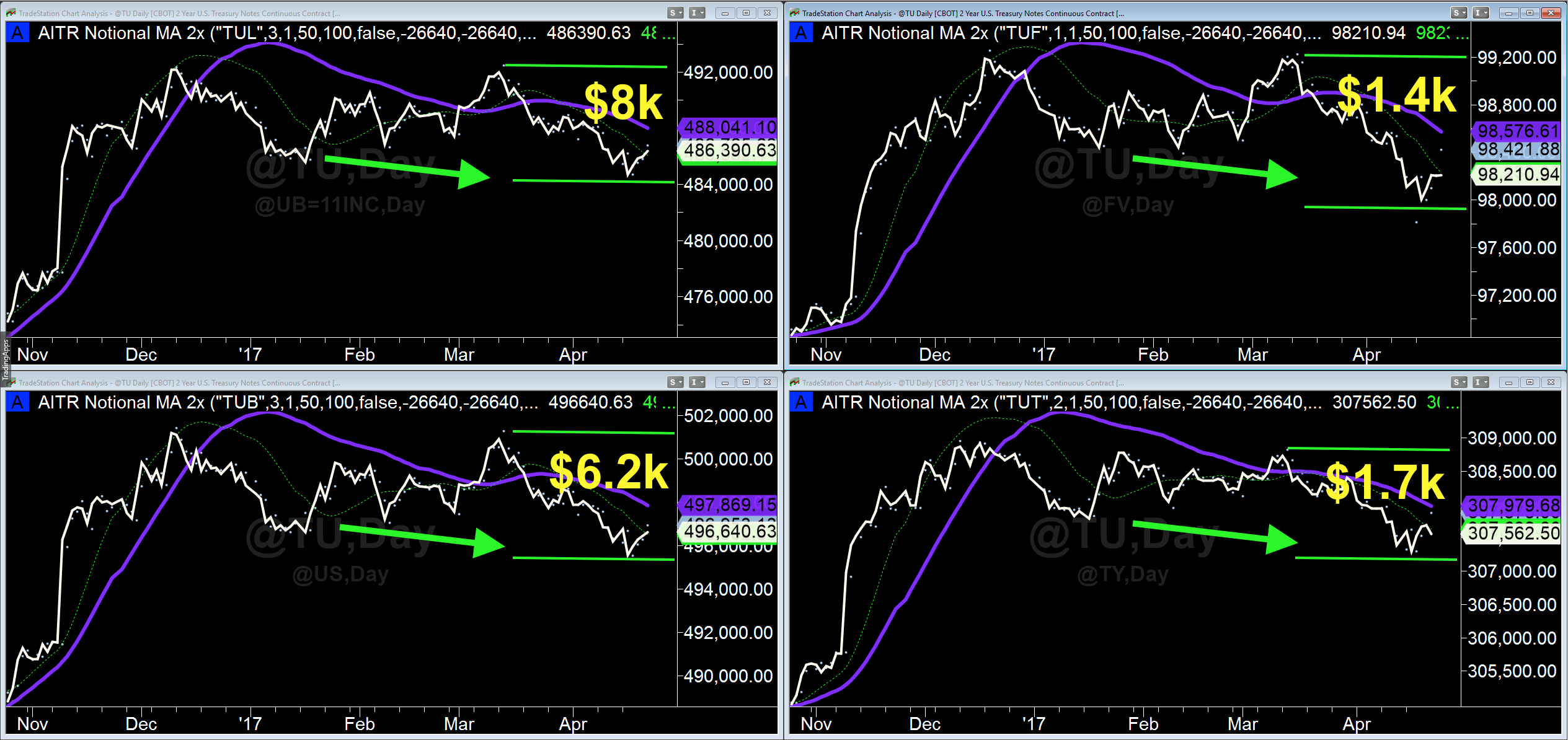There are many variations of the yield curve to trade, and it can be confusing which is the right one for your needs. So you may be wondering, which should I trade?
The answer is relatively simple, if you understand your personal capacity and tolerance for risk, and whether you are a long-term or short-term trader. Another consideration is a bit more practical, as some of the spreads may cost significantly more on a risk-return basis than others. So, this is your homework before you put your money to work.
The charts below show a bunch of different yield curve spreads involving the 2-year note as the front leg. Going clockwise, starting from the upper left chart, it includes the Ultra 30-year bond (3:1 ratio), the 5-year note (1:1 ratio), the 10-year note (2:1 ratio), and the 30-year bond (3:1 ratio). The chart also shows the range in price of the spread, with a high in March and a low in April of 2017.
So, from a risk perspective it’s clear that the spreads with bigger dollar ranges present more risk. These are the TUL and TUB spreads, which pair up the 2-year with the 30-year bond and ultra bond respectively. The TUL and TUB are also a bit more expensive to put on as well because there are more contracts necessary to execute the proper ratio trade, but the expense to return is much lower than the other two.
A large range would indicate more risk, depending upon the size of your account. A very large account would have greater flexibility, while a smaller account may be restrictive to certain spreads. Small accounts would find the TUT and TUF spreads more palatable.
The TUT and TUF spreads are also slower moving than the TUL and TUB, as they react more slowly to global macro events and changes in monetary policy. So, these spreads may be better for someone that is not as active a trader as others, or prefers position trading over swing trading styles.
The downward arrows indicate a flattening yield curve, so the appropriate strategy would be to short the spread. This means short the front leg, and go long the back leg. It’s a flattener trade when we have a downward sloping moving average. This simply implies that the front leg of the trade (2-year note) is weaker than the back leg, evaluated since the beginning of 2017. One can assume that longer term yields are falling faster than shorter term yields, and are likely to continue that way, so long as the trend is down.
Conclusion
So to sum it up, if you have a larger account and are a more active trader, then the TUL or TUB spreads may suit you. If you have a smaller account, or you prefer a trend trading style, then the TUT or TUF spread may be best for you.




